Rise of Nationalism in India | History - Birth of Indian Associations | 12th History : Chapter 1 : Rise of Nationalism in India
Chapter: 12th History : Chapter 1 : Rise of Nationalism in India
Birth of Indian Associations
Birth of Indian Associations
(a) Madras Native Association
One of the first attempts
to organise and vent the grievances against the British came through the
formation of the Madras Native Association (MNA) on 26 February 1852.
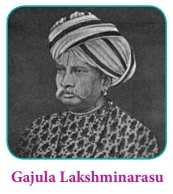
An association of landed
and business classes of the Madras Presidency, they expressed their grievances
against the Company’s administration in the revenue, education and judicial
spheres. Gajula Lakshminarasu, who inspired the foundation of MNA, was a
prominent businessman in Madras city.
The
Association presented its grievances before British Parliament when it was
discussing the East India Company’s rule in India before the passing of the
Charter in 1853. In a petition submitted in December 1852, the MNA pointed out
that the ryotwari and zamindari systems had thrown agricultural classes into
deep distress. It urged the revival of the ancient village system to free the
peasantry from the oppressive interference of the zamindars and the Company
officials. The petition also made a complaint about the judicial system which
was slow, complicated and imperfect. It pointed out that the appointment of
judges without assessing their judicial knowledge and competence in the local
languages affected the efficiency of the judiciary. The diversion of state
funds to missionary schools, under the grants-in-aid system, was also objected
to in the petition.
The MNA
petition was discussed in the Parliament in March 1853. H. D. Seymour, Chairman
of the Indian Reform Society, came to Madras in October 1853. He visited places
like Guntur, Cuddalore, Tiruchirappalli, Salem and Tirunelveli. However, as the
Charter Act of 1853 allowed British East India Company to continue its rule in
India, the MNA organised an agitation for the transfer of British territories
in India to the direct control of the Crown. MNA sent its second petition to
British Parliament, signed by fourteen thousand individuals, pleading the
termination of Company rule in India.
The life
of MNA was short. Lakshminarasu died in 1866 and by 1881, the association
ceased to exist. Though the MNA did not achieve much in terms of reforms, it
was the beginning of organised effort to articulate Indian opinion. In its
lifetime, the MNA operated within the boundaries of Madras Presidency. The
grievances that the MNA raised through its petitions and the agitations it
launched were from the point of view of the elite, particularly the landed
gentry of Madras Presidency. What was lacking was a national political
organisation representing every section of the society, an organisation that
would raise the grievances and agitate against the colonial power for their
redress. The Indian National Congress filled this void.
(b) Madras Mahajana Sabha (MMS)
After the
Madras Native Association became defunct there was no such public organisation
in the Madras Presidency. As many educated Indians viewed this situation with
dismay, the necessity for a political organisation was felt and in May 1884 the
Madras Mahajana Sabha was organised. In the inaugural meeting held on 16 May
1884 the prominent participants were: G. Subramaniam, Viraraghavachari, Ananda
Charlu, Rangiah, Balaji Rao and Salem Ramaswamy. With the launch of the Indian
National Congress, after the completion of the second provincial conference of
Madras Mahajana Sabha, the leaders after attending the first session of the
Indian National Congress (INC) in Bombay amalgamated the MMS with the INC.
(c) Indian National Congress (INC)
The idea of forming a political organisation
that would raise issues and grievances against the colonial rule did not emerge
in a vacuum. Between 1875 and 1885 there were many agitations against British
policies in India. The Indian textile industry was campaigning for imposition
of cotton import duties in 1875. In 1877, demands for the Indianisation of
Government services were made vociferously. There were protests against the
Vernacular Press Act of 1878. In 1883, there was an agitation in favour of the
Ilbert Bill.
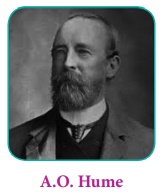
But these agitations and protests were
sporadic and not coordinated. There was a strong realisation that these
protests would not impact on the policy makers unless a national political
organisation was formed. From this realisation was born the Indian National
Congress. The concept of India as a nation was reflected in the name of the
organisation. It also introduced the concept of nationalism.
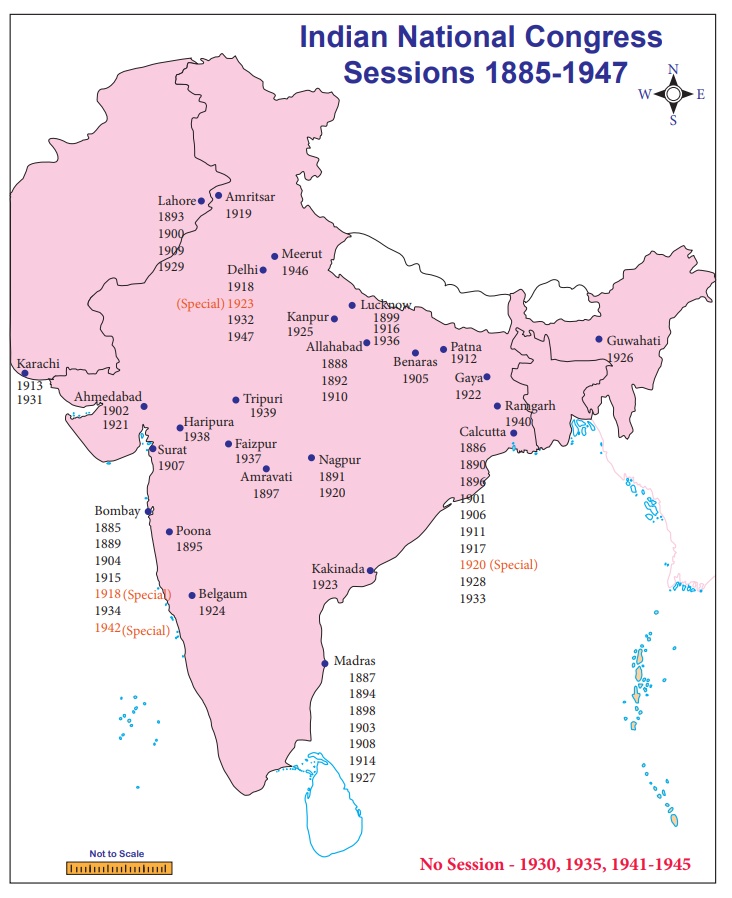
In December 1884, Allan Octavian Hume, a
retired English ICS officer, presided over a meeting of the Theosophical
Society in Madras. The formation of a political organisation that would work on
an all India basis was discussed and the idea of forming the Indian National
Congress emerged in this meeting. The Indian National Congress was formed on 28
December 1885 in Bombay. Apart from A.O Hume, another important founding member
was W C. Bonnerjee, who was elected the first president.
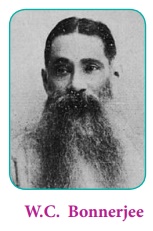
Though the activities of the INC then
revolved around petitions and memoranda, from the very beginning the founders
of the INC worked to bring every section of the society into its ambit. One of
the main missions of the INC was to weld the Indians into a nation. They were
convinced that the struggle against the colonial rule will be successful only
if Indians saw themselves as the members of a nation. To achieve this, the INC
acted as a common political platform for all the movements that were being
organised in different parts of the country. The INC provided the space where
the political workers from different parts of the country could gather and
conduct their political activities under its banner. Even though the
organization was small with less than a hundred members, it had an all-India
character with representation from all regions of India. It was the beginning
of the mobilisation of people on an all-India basis.
The major objectives and demands of
INC were
Constitutional
Opportunity
for participation in the government was one of the major demands of the Indian
National Congress. It demanded Indian representation in the government.
Economic
High land
revenue was one of the major factors that contributed to the oppression of the
peasants. It demanded reduction in the land revenue and protection of peasants
against exploitation of the zamindars. The Congress also advocated the
imposition of heavy tax on the imported goods for the benefit of swadeshi
goods.
Administrative
Higher
officials who had responsibility of administration in India were selected
through civil services examinations conducted in Britain. This meant that
educated Indians who could not afford to go to London had no opportunity to get
high administrative jobs. Therefore, Indianisation of services through
simultaneous Indian Civil Services Examinations in England and India was a
major demand of the Congress.
Judicial
Because
of the partial treatment against the Indian political activists by English
judges it demanded the complete separation of the Executive and the Judiciary.
(d) Contributions of Early Nationalists (1885–1915)
The early
nationalists in the INC came from the elite sections of the society. Lawyers,
college and university teachers, doctors, journalists and such others
represented the Congress. However, they came from different regions of the
country and this made INC a truly a national political organisation. These
leaders of the INC adopted the constitutional methods of presenting petitions,
prayers and memorandums and thereby earned the moniker of “Moderates”. It was
also the time some sort of an understanding about colonialism was evolving in
India. There was no ready-made anti-colonial understanding available for
reference in the late nineteenth century when the INC was formed. It was the
early nationalists who helped the formulation of the idea of we as a nation. They were developing the
indigenous anti-colonial ideology and a strategy on their own which helped
future mass leaders like M. K Gandhi.
From the
late 1890s there were growing differences within the INC. Leaders like Bipin
Chandra Pal, Bal Gangadhar Tilak and Lala Lajpat Rai were advocating radical
approaches instead of merely writing petitions, prayers and memorandums. These
advocates of radical methods came to be called the “extremists” as against
those who were identified as moderates. Their objective became clear in 1897
when Tilak raised the clarion call “Swaraj is my birth right and I shall have
it”. Tilak and his militant followers were now requesting Swaraj instead of
economic or administrative reforms that the moderates were requesting through
their petitions and prayers.
Though
they criticised each other, it would be wrong to place them in the opposing
poles. Both moderates and militants, with their own methods, were significant
elements of the larger Indian nationalist movement. In fact, they contributed
towards the making of the swadeshi movement. The partition of Bengal in 1905,
by the colonial government, which you will be studying in the next lesson, was
vehemently opposed by the Indians. The swadeshi movement of 1905, directly
opposed the British rule and encouraged the ideas of swadeshi enterprise,
national education, self-help and use of Indian languages. The method of mass
mobilisation and boycott of British goods and institutions suggested by the
radicals was also accepted by the Moderates.
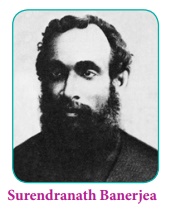
Both the Moderates and the Radicalswere of the same view when it came to accepting the fact that they needed to fulfil the role of educators. They tried to instil nationalist consciousness through various means including the press. When the INC was founded in 1885, one-third of the members were journalists. Most stalwarts of the early freedom movement were involved in journalism. Dadabhai Naoroji founded and edited two journals called Voice of India and RastGoftar. Surendranath Banerjea edited the newspaper called Bengalee. Bal Gangadhar Tilak edited Kesari and Mahratta. This is the means that they used to educate the common people about the colonial oppression and spread nationalist ideas. News regarding the initiatives taken by the INC were taken to the masses through these newspapers. For the first time, in the history of India, the press was used to generate public opinion against the oppressive policies and acts of the colonial government.
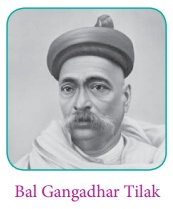
Bal Gangadhar Tilak was a firm believer that the lower middle classes, peasants, artisans and workers could play a very important role in the national movement, He used his newspapers to articulate the discontent among this section of the people against the oppressive colonial rule. He called for national resistance against imperial British rule in India. On 27 July 1897, Tilak was arrested and charged under Section 124 A of the Indian Penal Code. Civil liberty, particularly in the form of freedom of expression and press became the significant part of Indian freedom struggle.
Related Topics